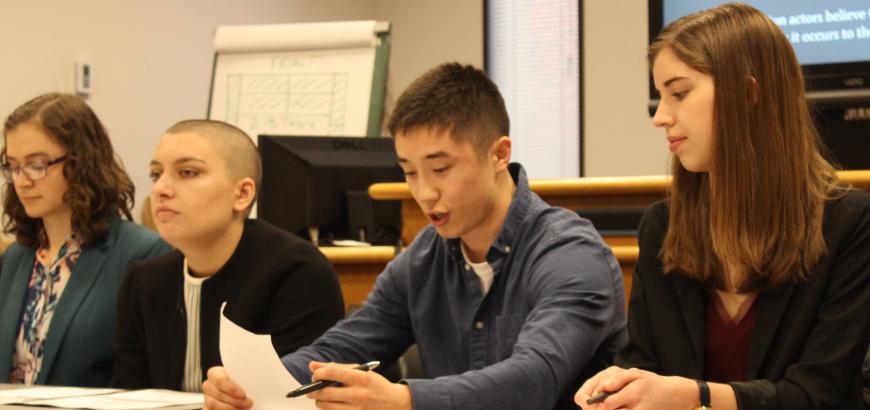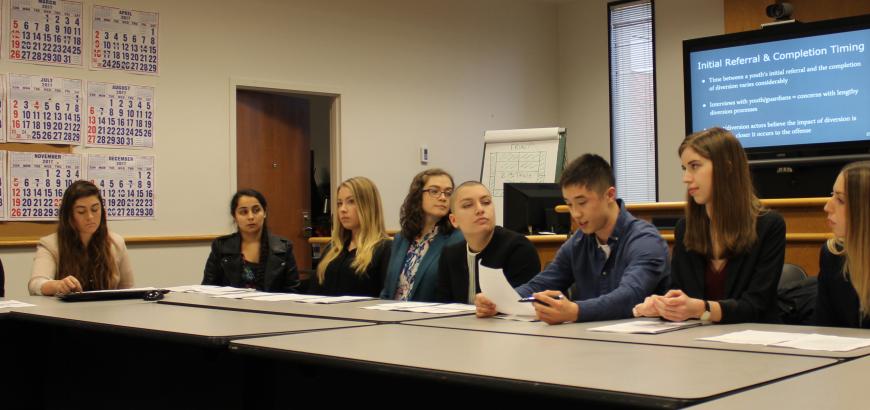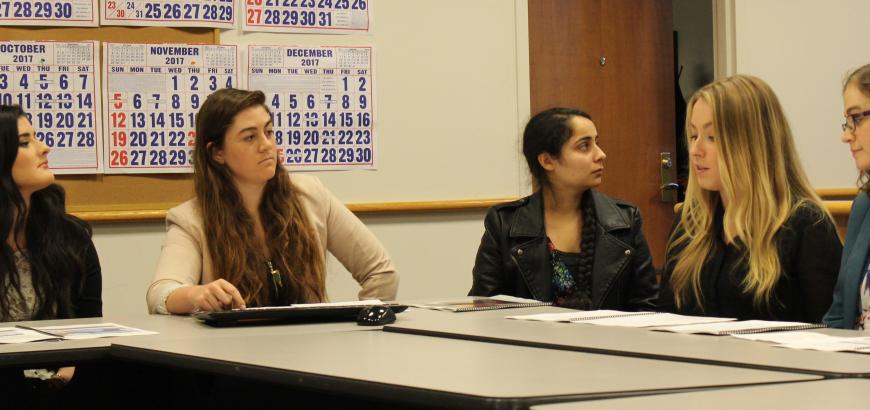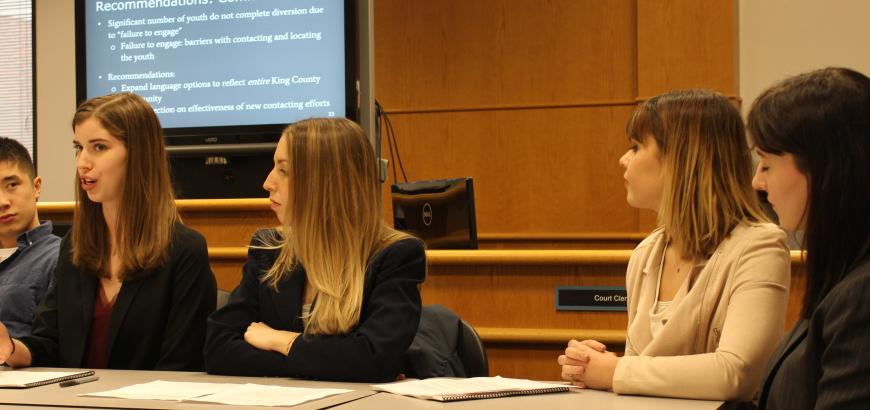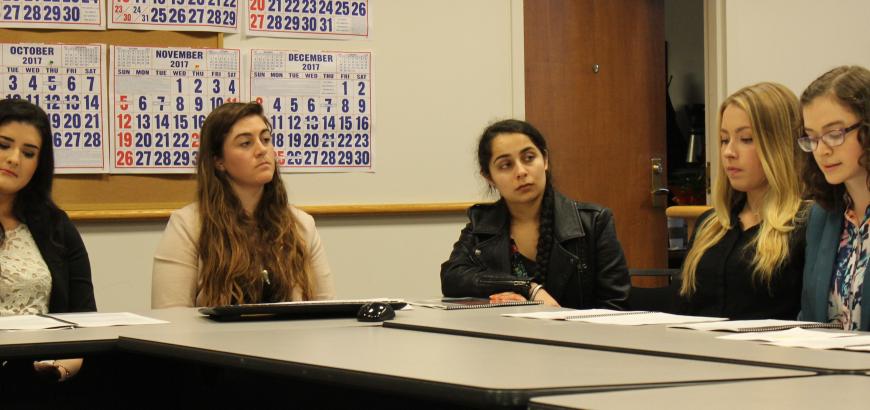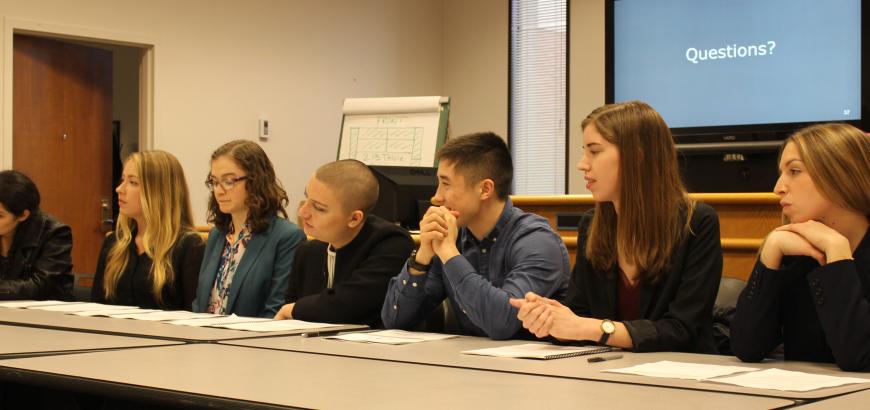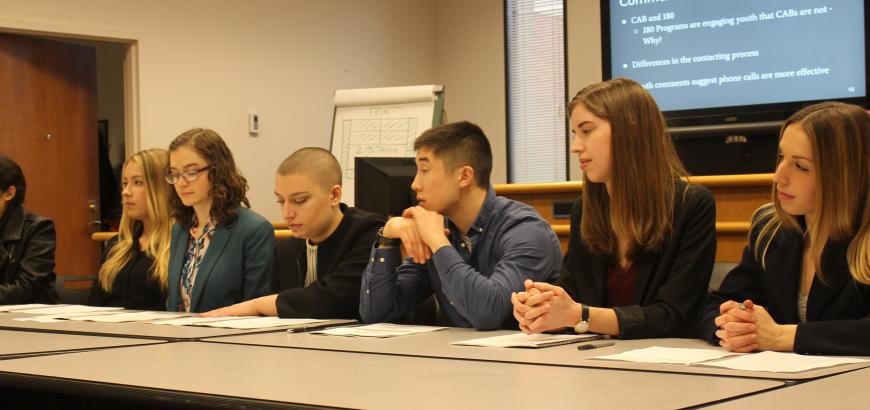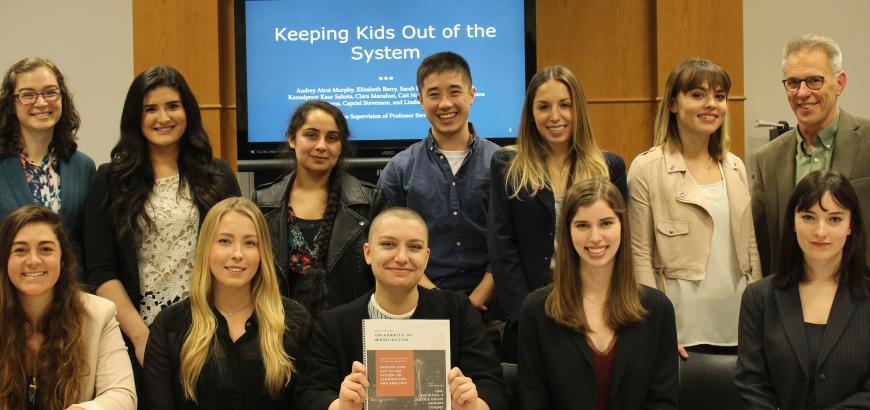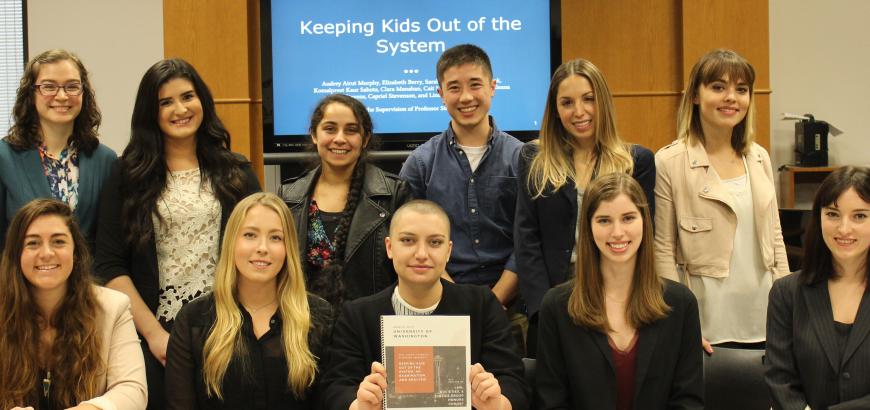By Medha Raman | LSJ Communications Assistant
Diversion is a popular option for prosecutors seeking to keep youths out of detention. Instead of jail, youth might be asked to perform community service or otherwise seek to improve their selves or their circumstances.
But are there patterns in which kids get diversion opportunities, and whether they complete them?
These were the questions that challenged 11 LSJ students involved with the 2016-2017 group honors project. They focused on juvenile diversion programs in King County. After two quarters of focused work, they were able recently to present their key findings and recommendations with court and diversion professionals.
The honors project, entitled “Keeping Kids out of the System: An Examination and Analysis,” aimed to study patterns in the practice of referrals of juveniles to diversion programs and the potential effect of these patterns on rates of completion. The focus was on three different juvenile diversion processes in King County – Community Accountability Boards (CABs), the 180 Programs, and Juvenile Probation Counselor Supervised Diversion.
As part of their research, the group, led by Professor Steve Herbert, collected and analyzed 2014 data from the King County Juvenile Court. They categorized referral information and studied the patterns by offense type, disposition, age, race, and more. To supplement their quantitative data, they conducted over 30 interviews with court actors and attended several diversion programs to speak with youth involved in the system.
In their presentation, the group described the information they had gathered through this process and shared their findings.
LSJ senior Eleana Stevens began by describing the completion of juveniles who attend diversion programs stating, “Of all the youth who attended a diversion program, almost all of them completed it.”
However, as senior Elizabeth Berry noted, the rate of completion does not include the many youth who were eligible for diversion programs but did not attend.
According to honors student Marisa Russell, who gave an example of how repeated personal phone calls used in the 180 Program were much more effective in reaching juveniles than letters home sent by the CABs, “one of the main obstacles preventing youth from attending diversion programs are barriers with communication."
The group also found several patterns in juvenile diversion related to race. Notable differences found between minority youth and white youth included rates of completion, rates of engagement, filing patterns, and average age.
Additionally, several group members spoke about the correlation between location and referrals to juvenile diversion programs.
As senior Cait Nold stated, “There is a high concentration of referrals in South King County, with the majority of youth referred to diversion from that area.”
Using this information, the group generated a few recommendations to target future research and development. These recommendations included better communication between programs and youth, more follow-up resources, and further data collection.
Still, even after seeing all the room for improvement with diversion programs, the group was still optimistic.
“Overall, we are excited and hopeful about the future of diversion in King County,” concluded junior Clara Manahan.
Court actors and professionals viewing the presentation were all extremely grateful for the research and recommendations.
“As a system, we don’t have the resources to evaluate what is happening,” said Senior Deputy Prosecuting Attorney, Jimmy Hung. “I’m very appreciative of the type of information you’ve collected and studied. This work is going to be incredibly useful and helpful, and I promise we will try to follow all your recommendations.”
For his part, Professor Herbert was thrilled with the work that the students completed.
“The challenges that faced this group were immense,” he said. “The numerical data they received were not in good shape, so it required Herculean efforts to make those data usable. And the range of interviews and observations the group did was incredibly broad. They worked extraordinarily hard, particularly during the final stages. I could not have been more proud of them.”

